
Background
As Web3 and NFT universe is expanding, it becomes more and more tedious for the musicians and artists to identify the right platforms to partner with. We are going to investigate the platforms one by one to identify their value proposition and help musicians to build their path to success by prioritizing their participation in NFT projects.
This is the final review we are conducting this year – the Twitter voting chose Royal.io.
Summary
- Great quality platform turning famous artists' Web3 music into an investment opportunity
- Slow and very selective in onboarding artists and long-term ROI
- Has very strong backing, is financially sophisticated, and delivers end-to-end services
Day 1: First look and register
We needed to start this one with a bang – the final one of the 10 reviews is closing with an industry giant, Royal.io. From the very first glimpse, it shines with big names like Nas, Royce da 5’9, and Justin Blau (hello Mr. Founder), we can keep going. This platform is different from most that we’ve reviewed so far in one way – you don’t buy Web3 music NFTs, instead, you can buy song tokens and get paid the streaming royalties an artist gets.
The front page is designed very professionally and gives a clear idea about how Royal.io works. I already noted a couple of things that I want to investigate further: 1. what happens when I sign up, 2. what the royal dashboard looks like, and 3. which blockchain are we dealing with?
1. Signing up with Twitter failed. Let me in, Elon! The old-school email worked. It always does. And immediately I get the bridge to #2 – the Dashboard link appears at the top of the front page.
2. Quite simplistic, I’d say. Can’t tell yet whether this is all I expect of it, but take a look:

3. Royal.io doesn’t make it easy to figure out which tech stands behind the platform. It offers its own wallet at the point of creation, but apparently only allows you to buy the tokens with the good old fiat. Blockchain.com told me they gave me an ETH address. Why so candid?
Despite being 1.5 years old, and probably one of the best-funded platforms (between $15 million and $55 million according to different sources), the features of this Web3 music platform are quite limited. Whether it’s a good thing or not, we are yet to find out.
Day 2: Artist registration and release
TBH, I keep my hopes as low as I did with Sound.xyz when thinking about joining as an artist. Nevertheless, let’s see what it takes. I found all the info necessary on the Royal.io support site, Artists section. It looks like it may take an indefinite time, although the submission form was sweet and short. Just a few questions about whether your song or album has already been released, how much of it you own, whether any labels are involved, and how much of the streaming rights you’d like to share with the folks on Royal.
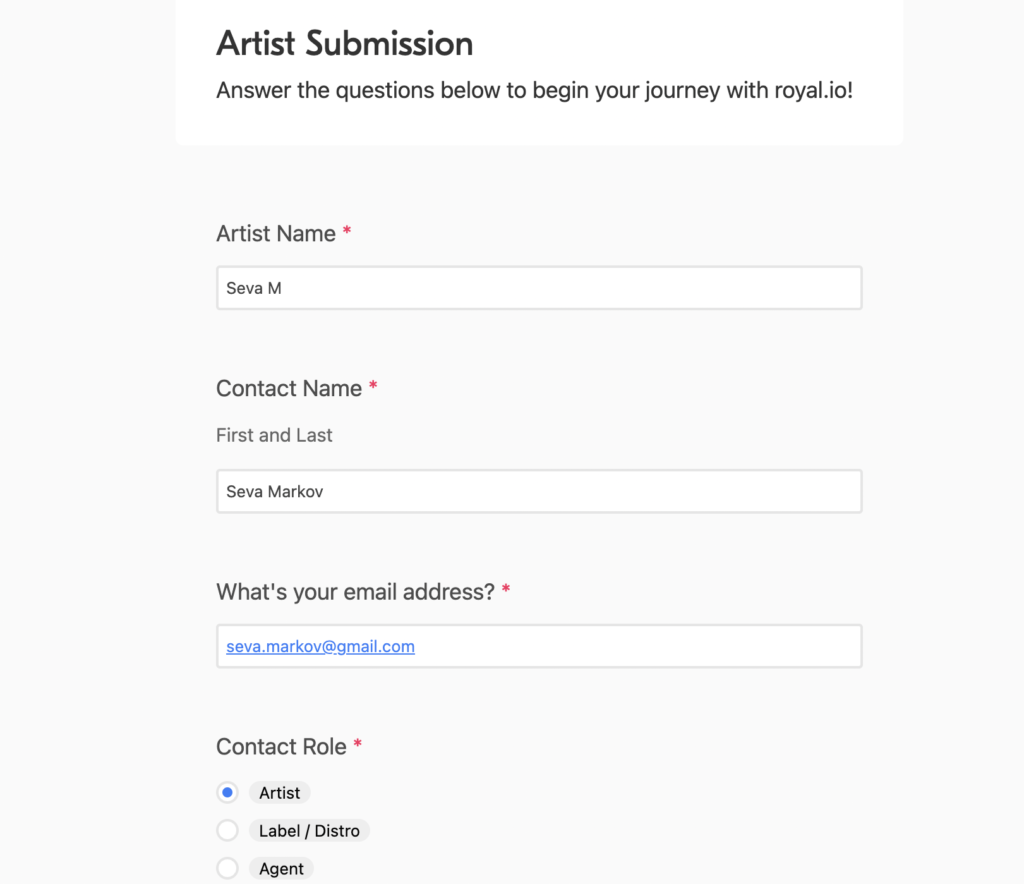
Among other things on the support page, just wanted to note that Royal.io is quite flexible in terms of song ownership – you can sell a fraction of it, or 50%, if you own part of it, the split is taken into account, it’s ok even if the other part belongs to the label. Essentially, they just apply simple math – I bet the complexity with which they add value comes at a later point when the streaming revenues are calculated and distributed.
Just one unsettling thought that crosses my mind so far: Essentially, the artist sells their portion of streaming revenues for a flat price. I’m not a doctor, but I’ve heard that this is how it happens with labels, and then those musicians whose music becomes really popular in the long term may not feel good about it. Isn’t it what we tried to avoid?
Obviously, the difference is that in this case the revenue is shared with the valued audience, instead of an evil and senseless label or agent. But then, if you want to sell it for a decent price, and not get ripped off, how do you ensure your music doesn’t land in the hands of evil and senseless investors? You don’t. Still, the idea is good, even if it wasn’t conceptually better than what’s going on today, it’s still a change in the industry, and change is good. That’s what we want from Web3 music scene.
Day 3: Community and Support
“What’s good everyone?” I said to general-chat on Royal discord. It’s quite active comparatively, and I managed to find a few very interesting updates in the announcements, and blog posts that are very resourceful and educational. One of them is this piece on “Music as an Asset” – a highly recommendable read to understand the market share of streaming today, and the potential for the future of Web3 music scene.
When I accessed the platform today it looked way different in many ways. Maybe a new release, but there’s no more dashboard, but two links in the top menu – portfolio and discover – a great improvement, and both pages look very engaging and exciting to explore. I’m noticing some tools I haven’t seen before as well, like the estimates for how much you can get from buying a token against the potential number of streams.
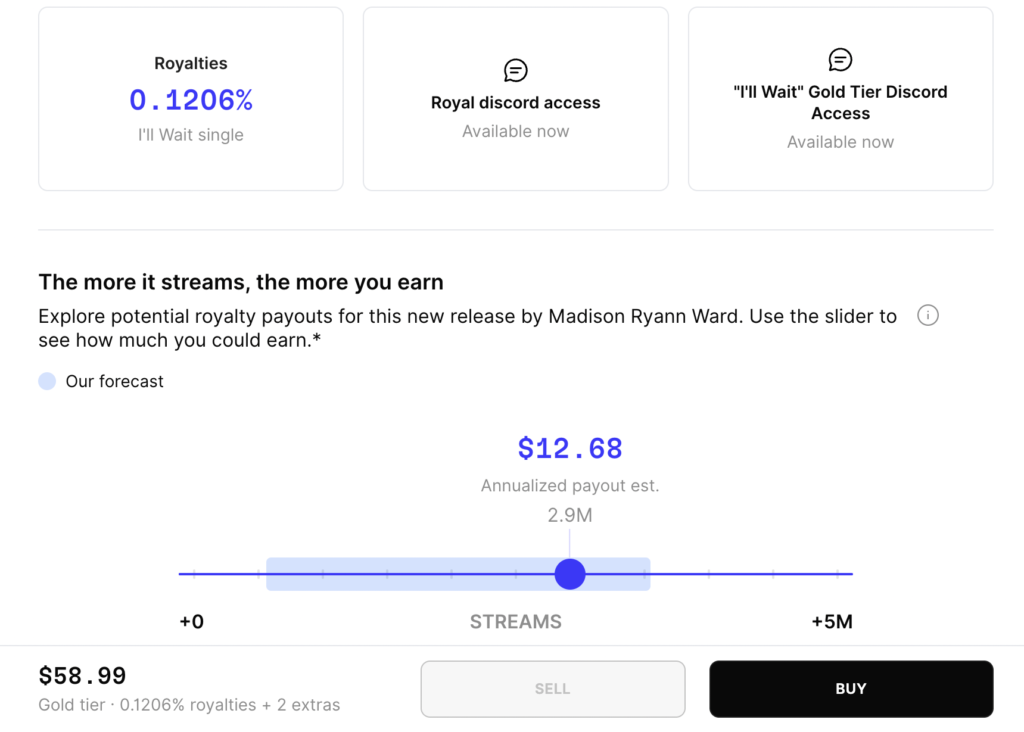
You’ve gotta give it to the Royal UX team – most of it is very intuitive, and where it’s not, you can point at information icons to get a quick explanation. The information about music pieces you’re investing into is rather sufficient as well, and take a look at my first favorite, Madison Ryann Ward:
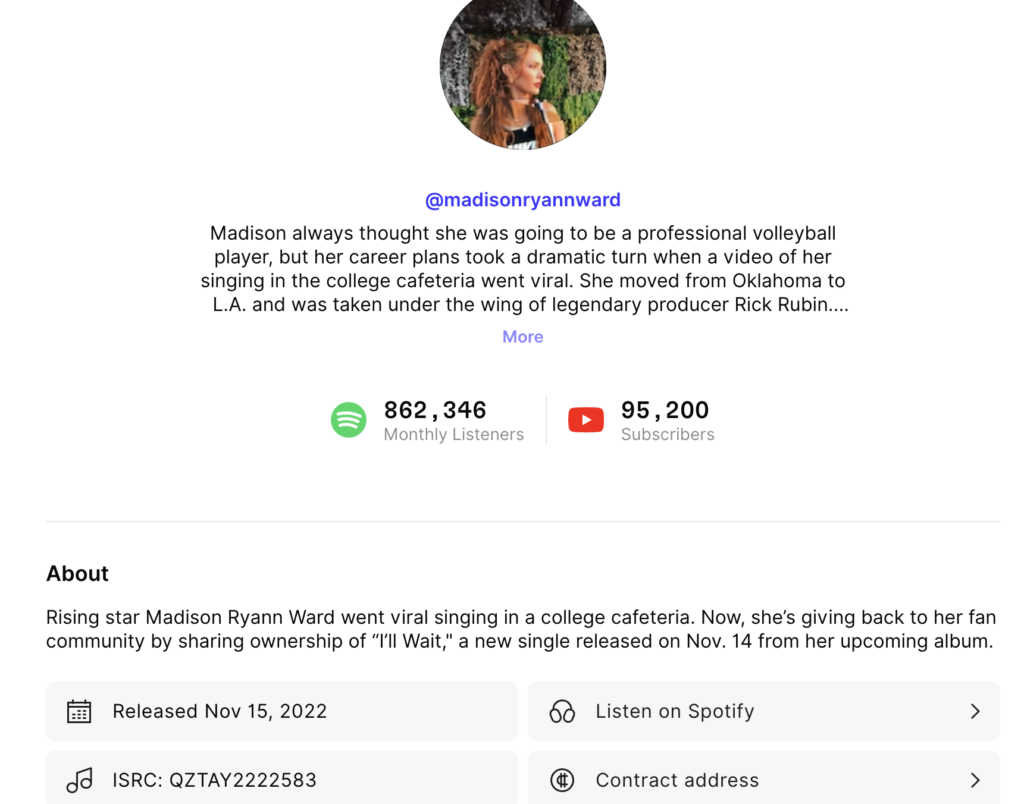
As an artist, I’d appreciate a platform representing my music in such a diligent way.
Just a couple of quick notes:
1. I wish “Listen on Spotify” opened in a new tab rather than the same window.
2. Contract address leads to Polygon scan – I like Polygon, and looking further into it, looks like other contracts are also made with it, maybe I wasn’t right before and not everything is done with ETH here. Fiat still appears to prevail on Royal.io though.
Day 4: Business Model
I hope I understand the numbers right, and won’t screw the picture with misunderstanding, but let’s take a look at one of those ROI charts again.
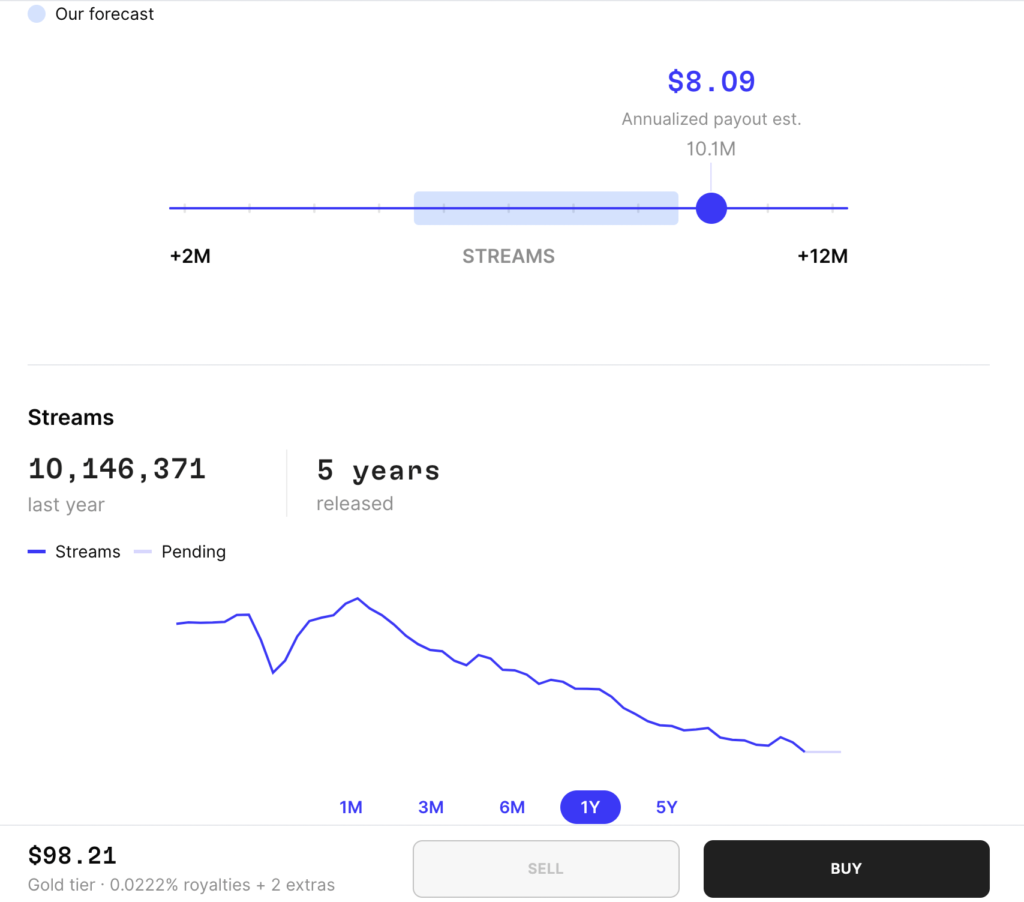
And yeah, we’re looking at Royce Da 5’9 feat. Eminem Caterpillar track token this time. I set up the current streams chart at the bottom to show 1 year. Then I set the calculator to the number of streams from that past year. The calculated annualized payout is estimated at $8. The cost of the token is $98. To recover the cost would take about 12 years. But it is reasonable to expect the interest in this track to keep declining as time goes by. That’s not too impressive, but need to take a couple of things into account:
- You can always sell the token, and get all or some of the value back.
- You never know which movie features this track 5 years from now and brings it more popularity than it originally had. Talking about the example of Kate Bush and Stranger things, if you know what I mean.
And it would be unfair not to mention the way that Royal makes money so far, and that piece is plain and simple 2.5% commission from trading the tokens. It’s not free as with some more open platforms like Nina, but it’s not 10-20% that we saw a few other platforms charging per sale.
Day 5: Artists
Overall there’s been 20 releases on Royal.io, which is surprising, given the platform has been live for over a year. Just to be clear, those are mostly songs, not albums or collections. Two of which are 3LAU himself. It is a lot of work that is probably not concerning music – there are big names like Big Boy and Nas, it takes time to agree with them. Royal.io also takes care of making the financial estimates for new releases and the ones with history.
It’s fun to see familiar faces here, like VÉRITÉ that was mentioned in our 7 days with Catalog. Her release of “He’s not you” is actually available on Catalog, while selling the streams revenue on Royal. And I love it, that’s what every independent artist should do too – have multiple ways to capitalize on their creative output. Just don’t sell the same song NFT on multiple platforms, that’s cheating.
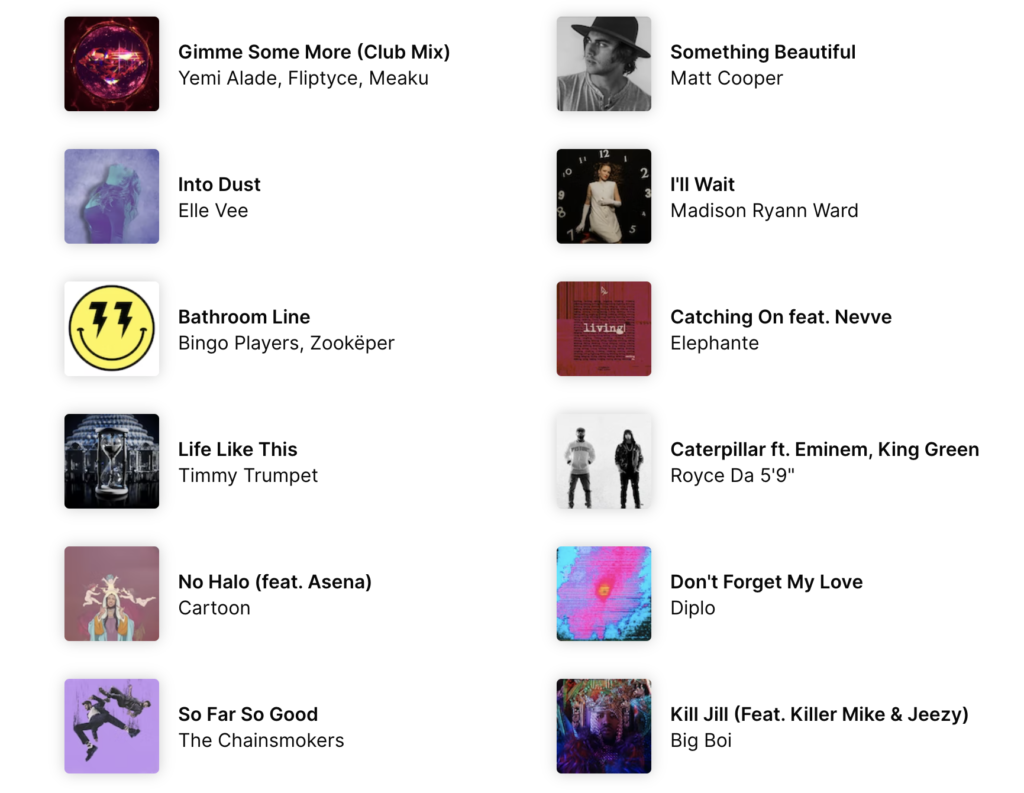
Day 6: Prospects
Well, my prospects of minting here are pretty low. At least not anytime soon.
I’m still skeptical about the cost/benefit of the campaign unless there is something I’m not noticing. Judging by the current number of releases, I don’t see how this platform is going to expand. The closest platform I can think of is Sound.xyz, and they seem to be moving with a light speed in comparison to Royal. The product Royal sells is an opportunity for artists to bond with their fans and share part of the cash inflow they get from streams. But to be honest, I’d rather get a ticket to a concert to bond, and invest in financial products that don’t depend on a rockstar’s popularity, especially living through the rise of cancel culture.
The pricing is market driven, it’s not based on sentiment. To be completely honest, it looks like the artists are not even trying to connect with anybody there, they just give up some revenue for a pretty expensive price. Chainsmokers’ massive 300 million streams distribute a royalty of 0.0002%. I don’t know, I just feel like we can do better in Web3.
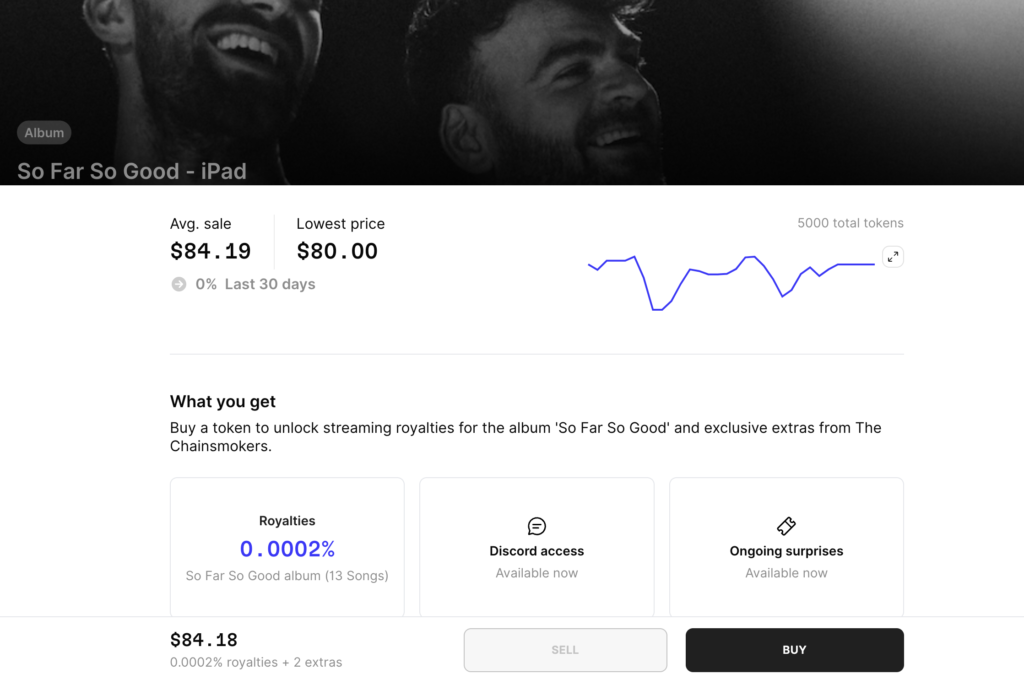
Day 7: Results
Overall, it’s a really smart and noble idea. It is inaccessible to me personally as neither a musician nor an investor at the moment, but I wish something with a similar concept was created in my league. I hope the investment that was brought in will help develop a system that will keep scaling the platform.
At this time I’m really lacking the focus on music and fandom. It feels like I’m at the stockmarket that has a soundtrack to it. It’s funny that the first Web3 music platform I reviewed in this cycle also had a really high entry barrier, and also resembled a stock market – it was Bolero Music, and it felt much more about music and bonding, although still a bit estranged from feeling truly connected with musicians. I’ll have to revisit it – saw they’ve got a really cool redesign job done.
As for Royal.io design – flawless, simplistic, and resourceful at the same time. Applause to UX team, alongside Royal’s legal and finance experts. It’s not easy what these teams do, we know it by examples of many platforms that overpromise and stagnate in due diligence while delivering.


